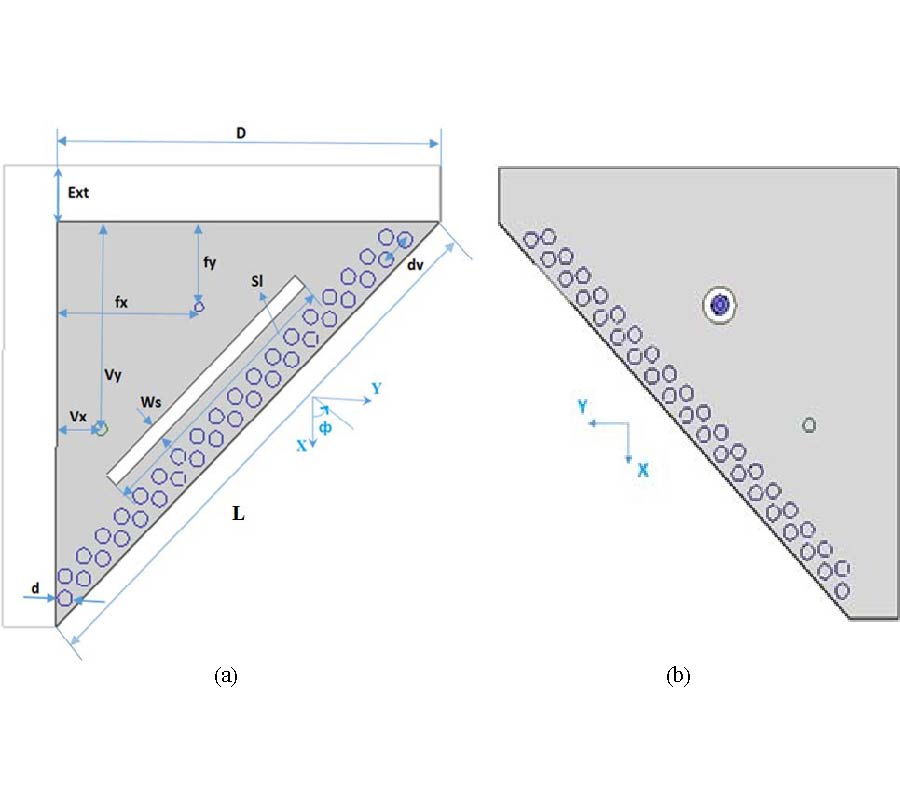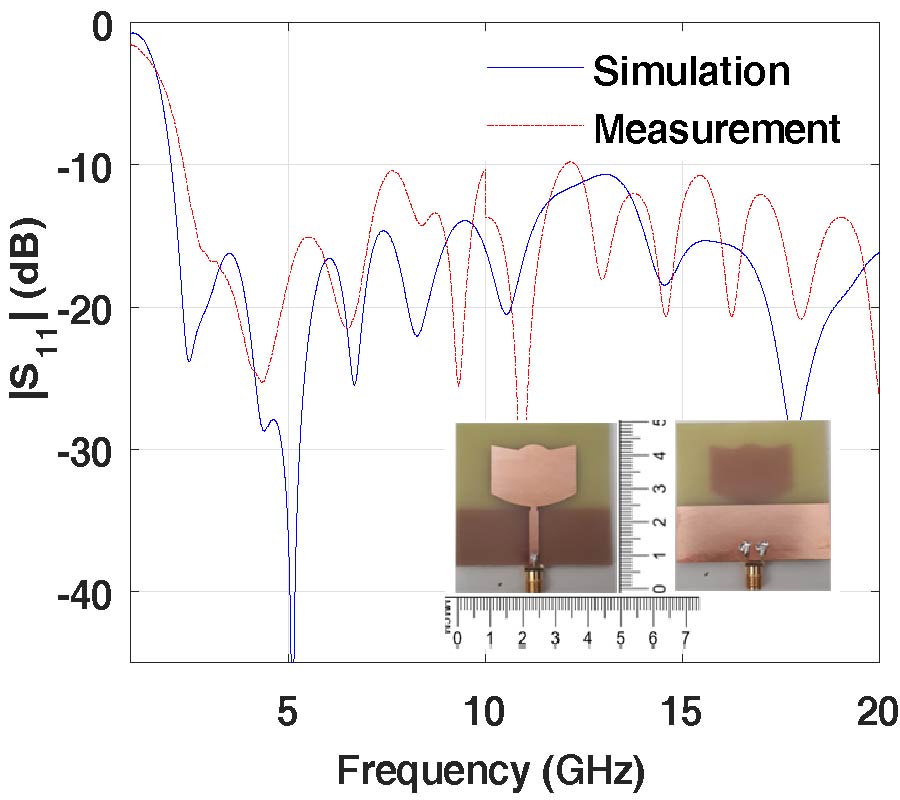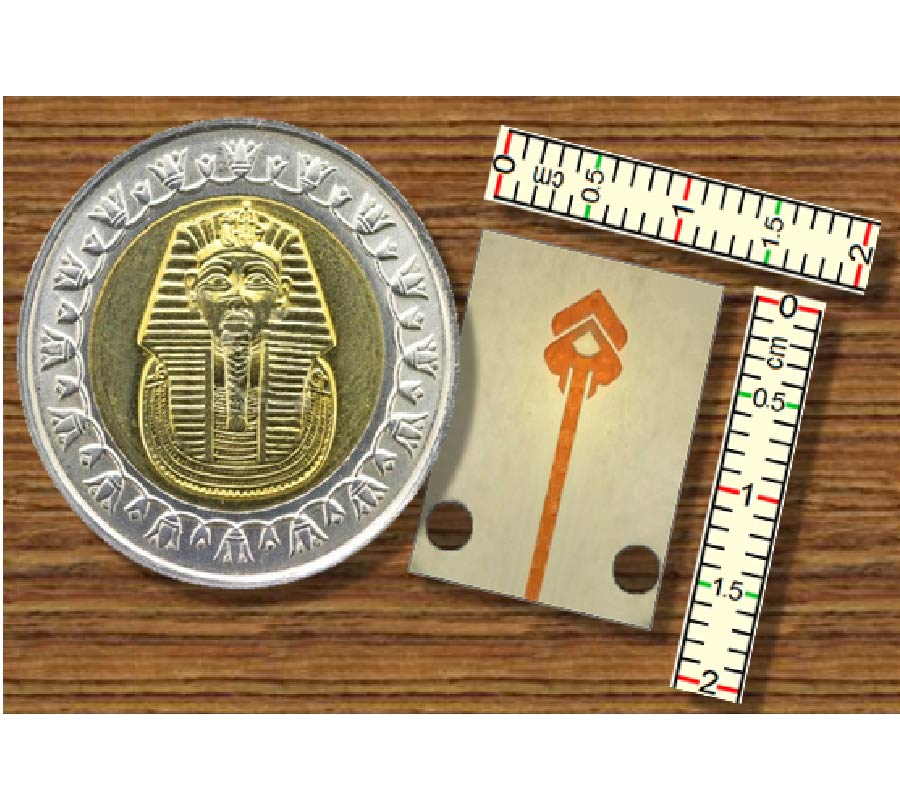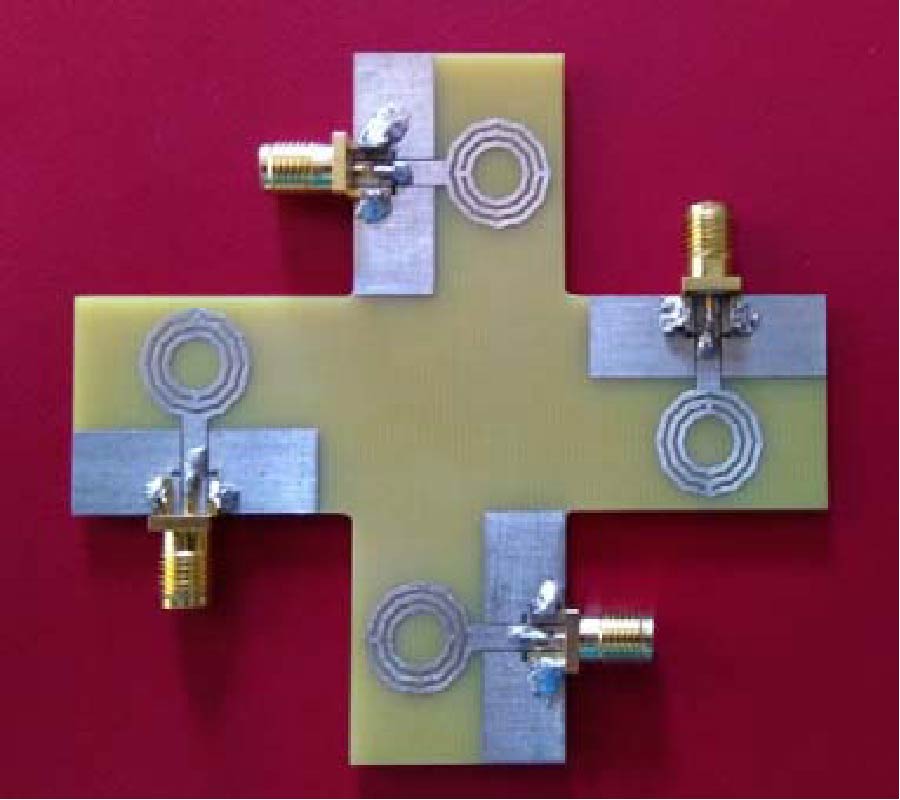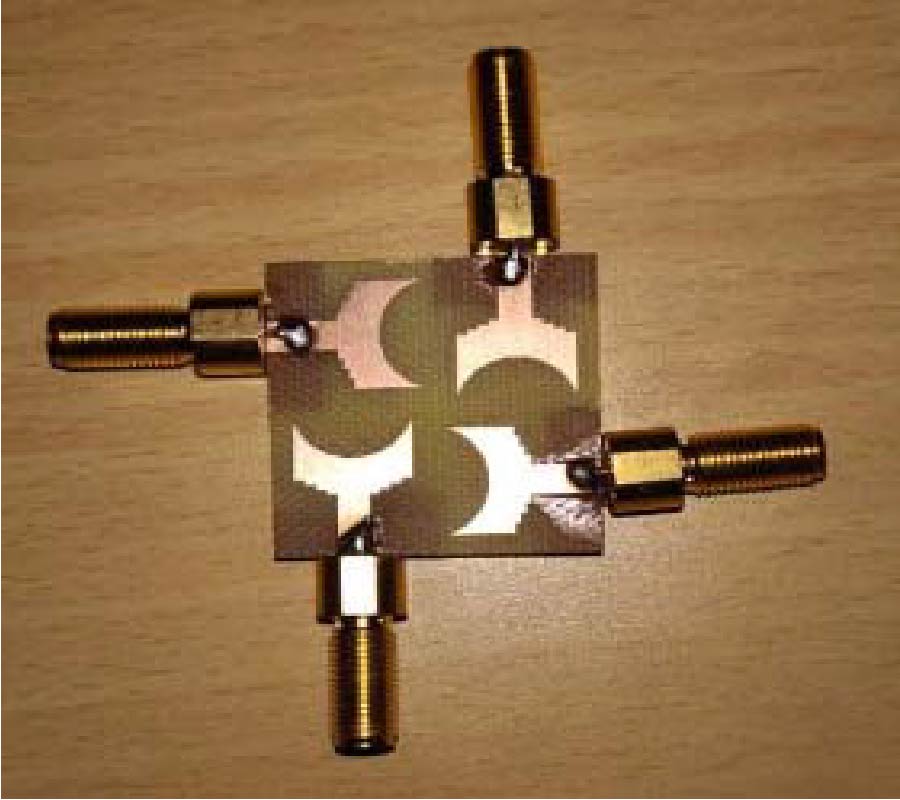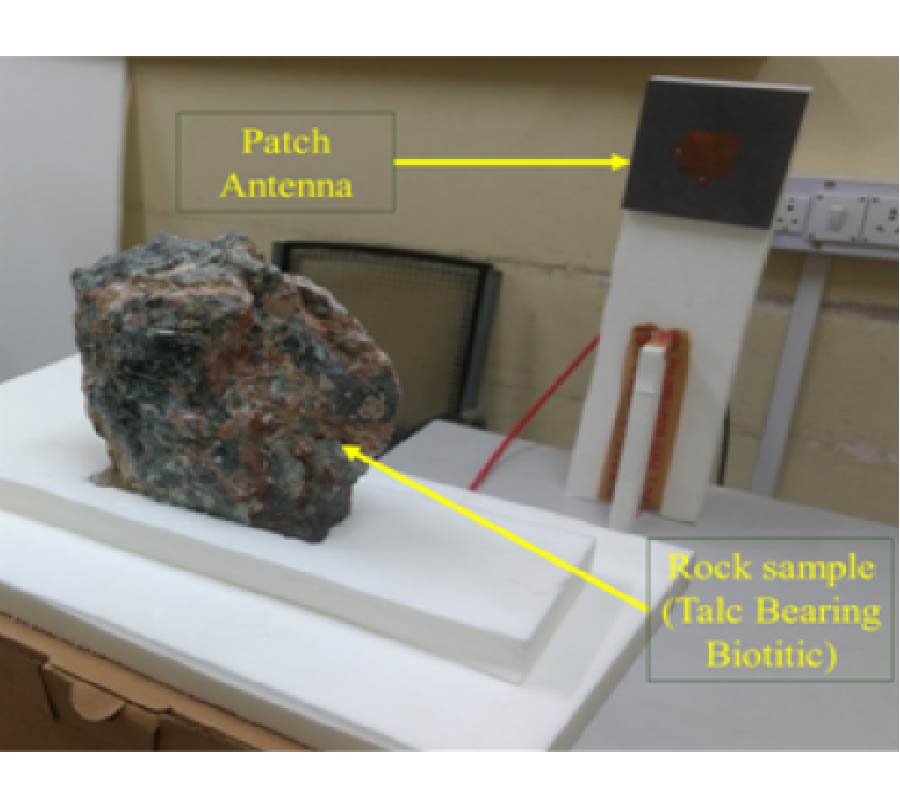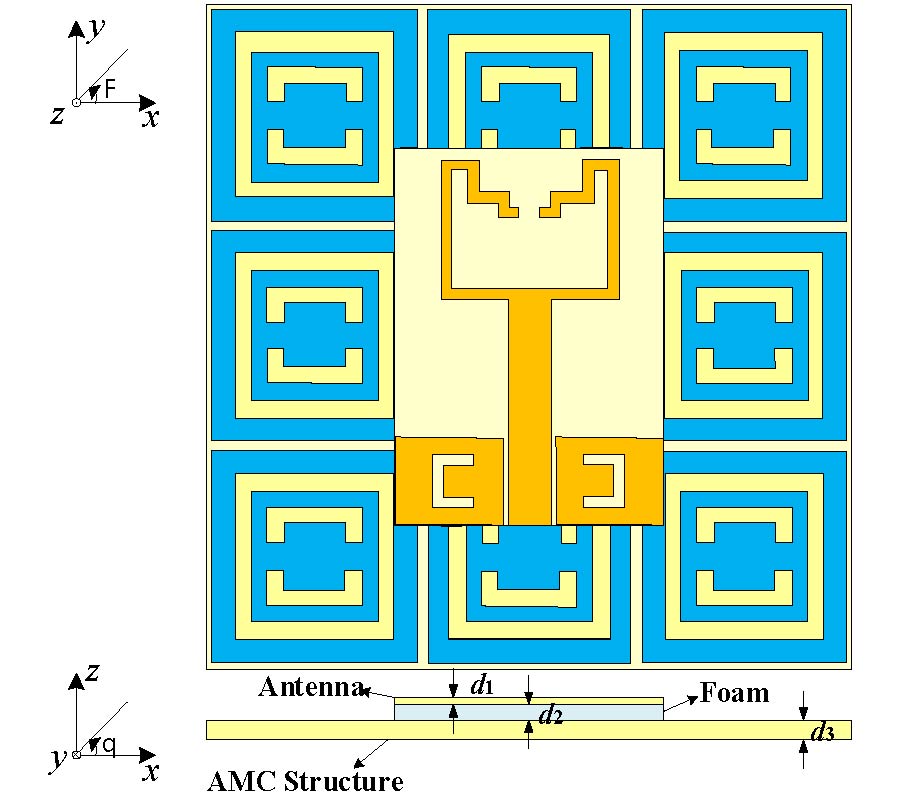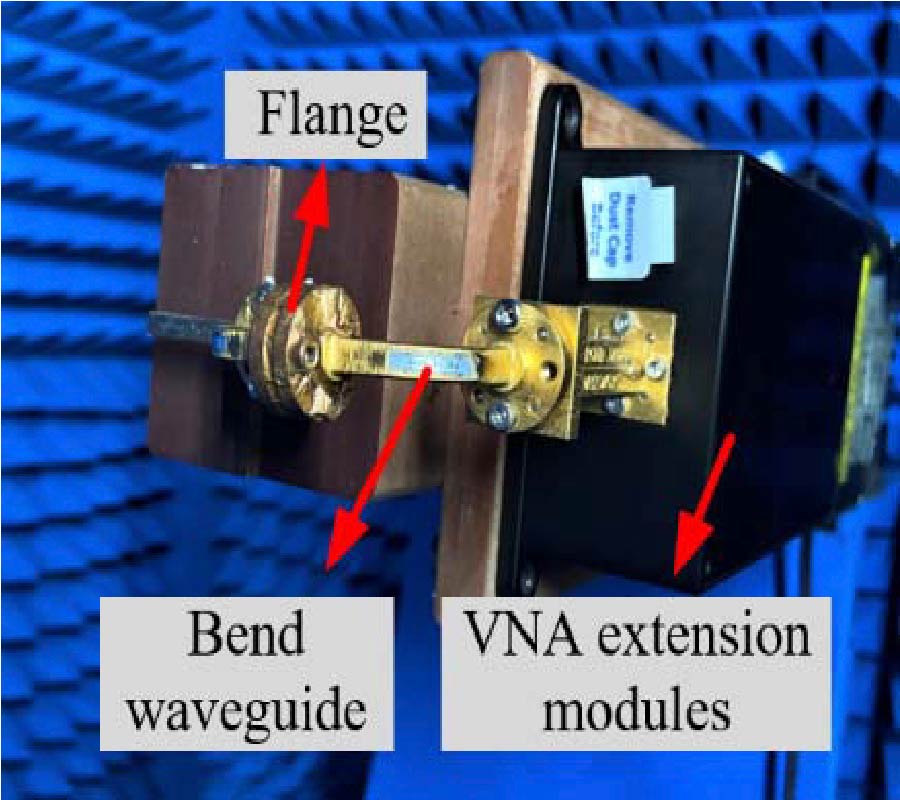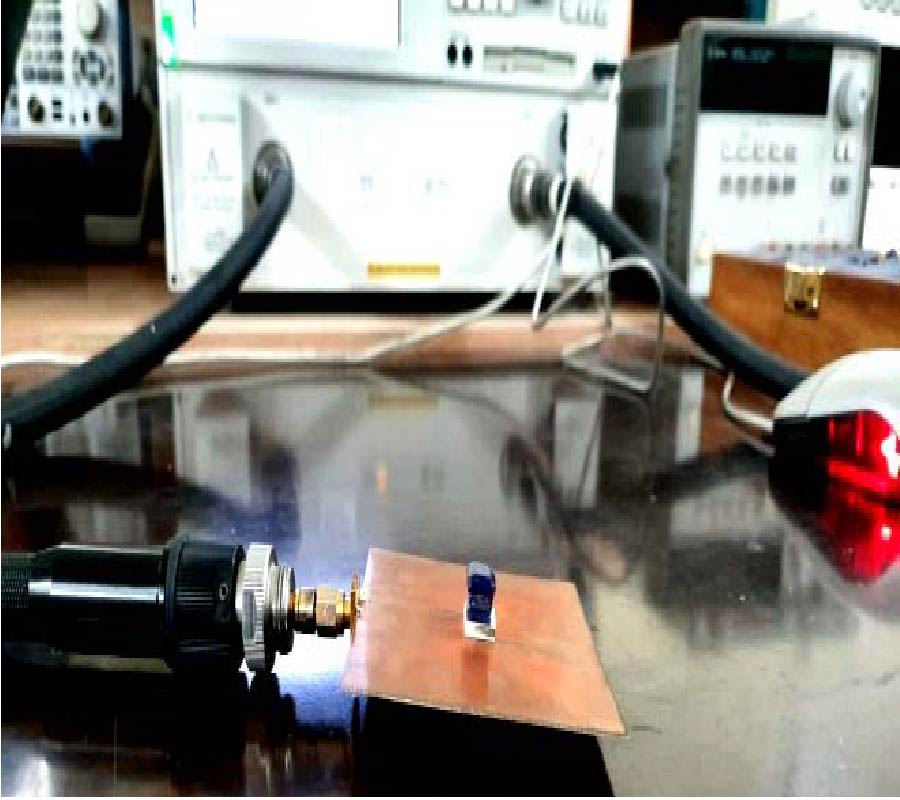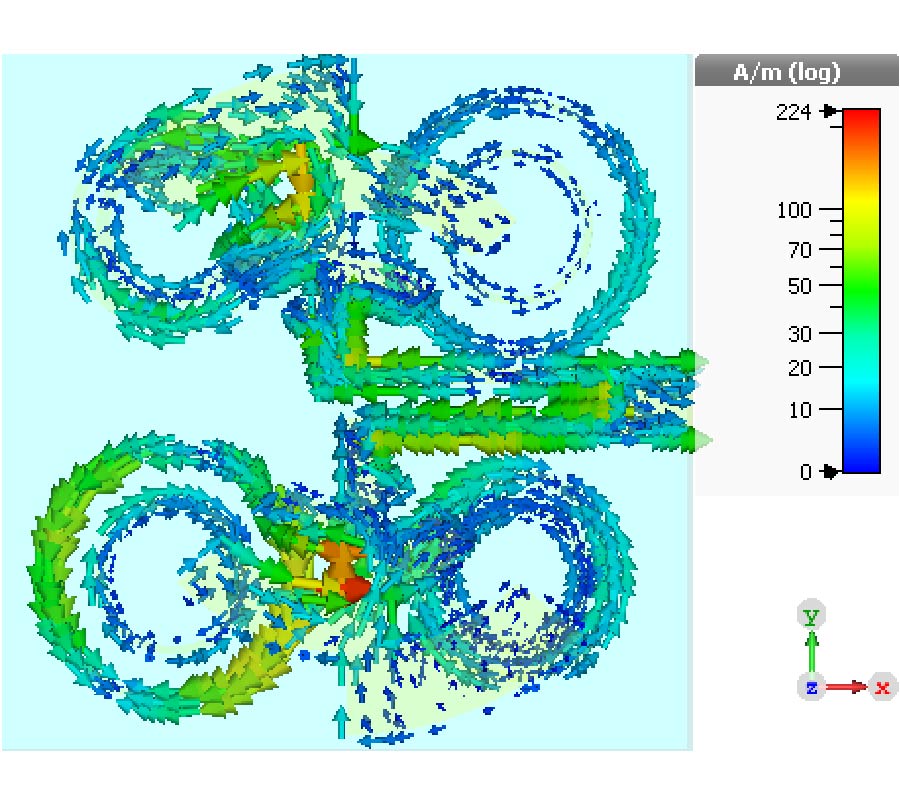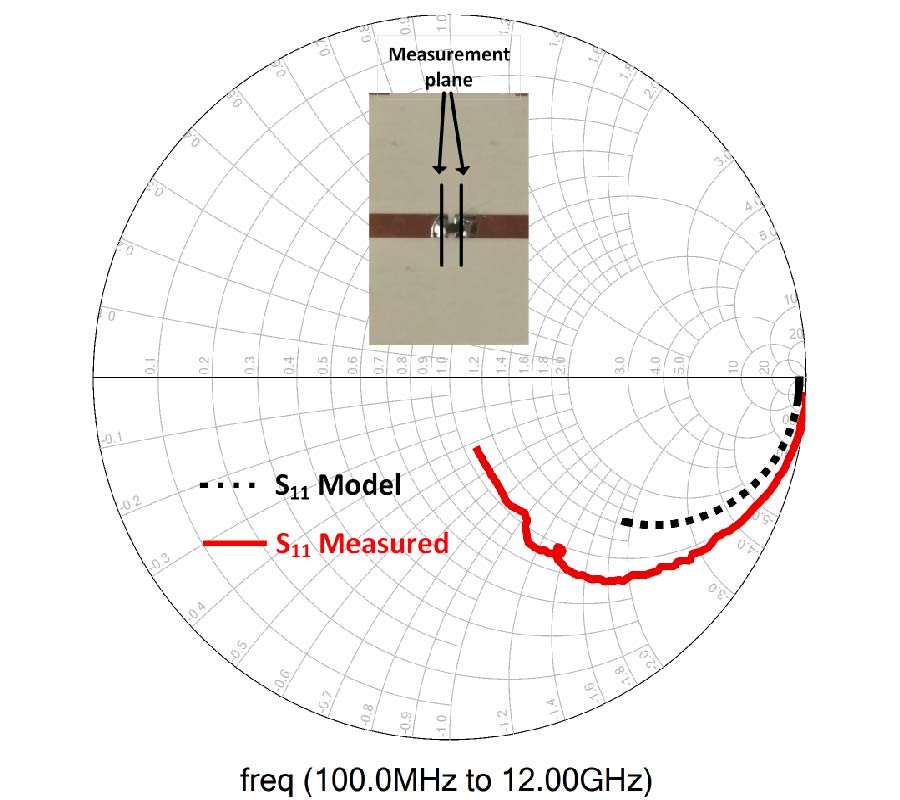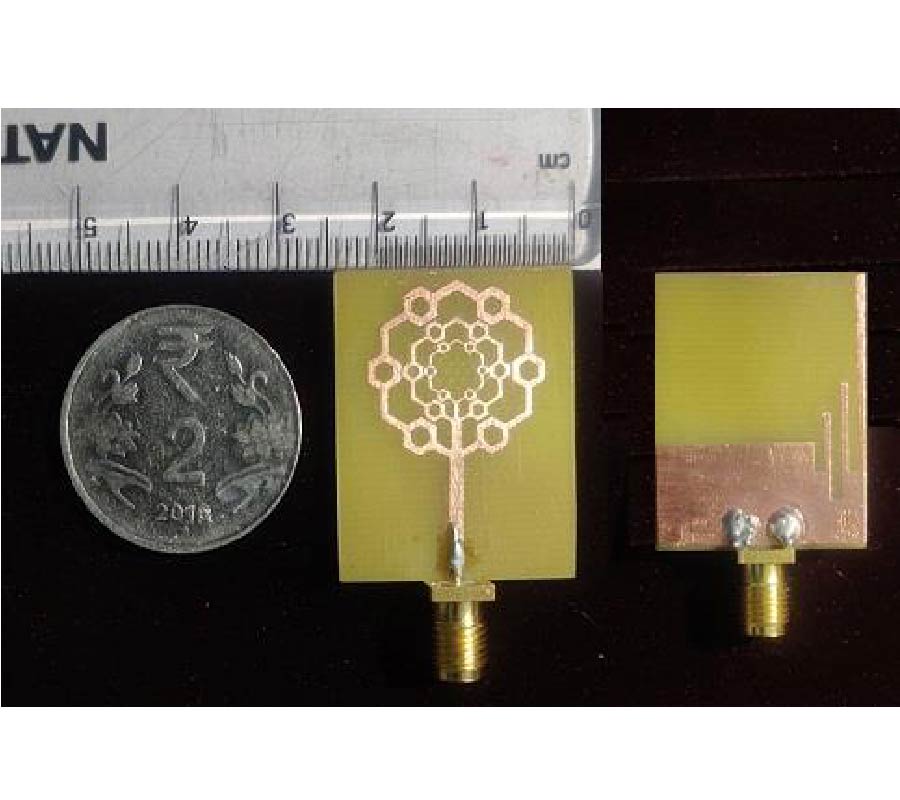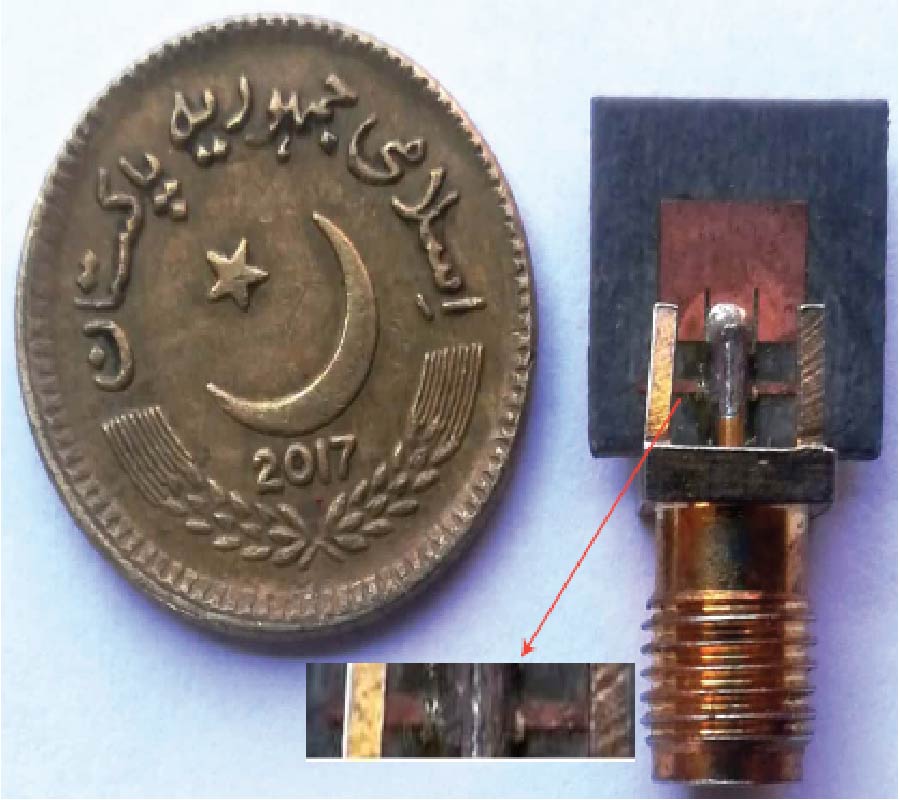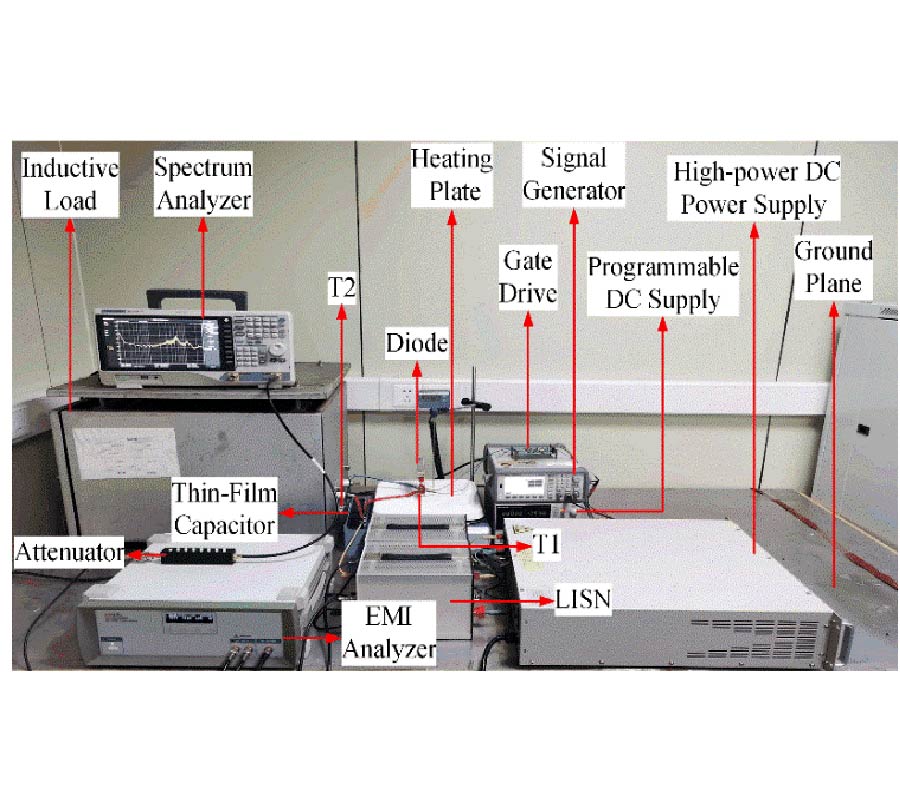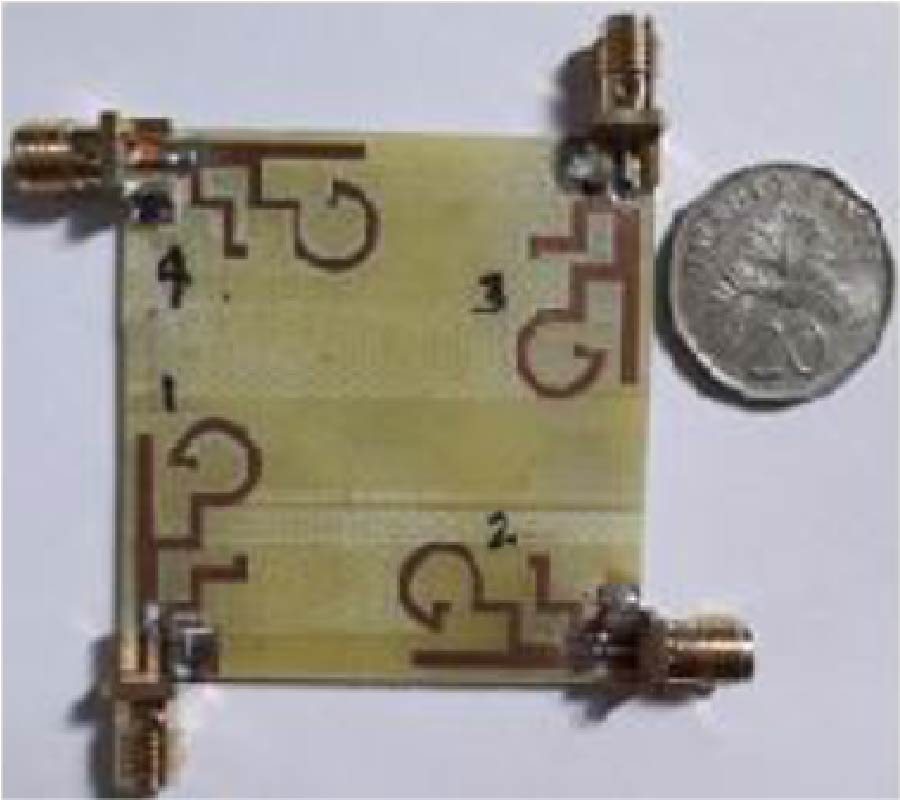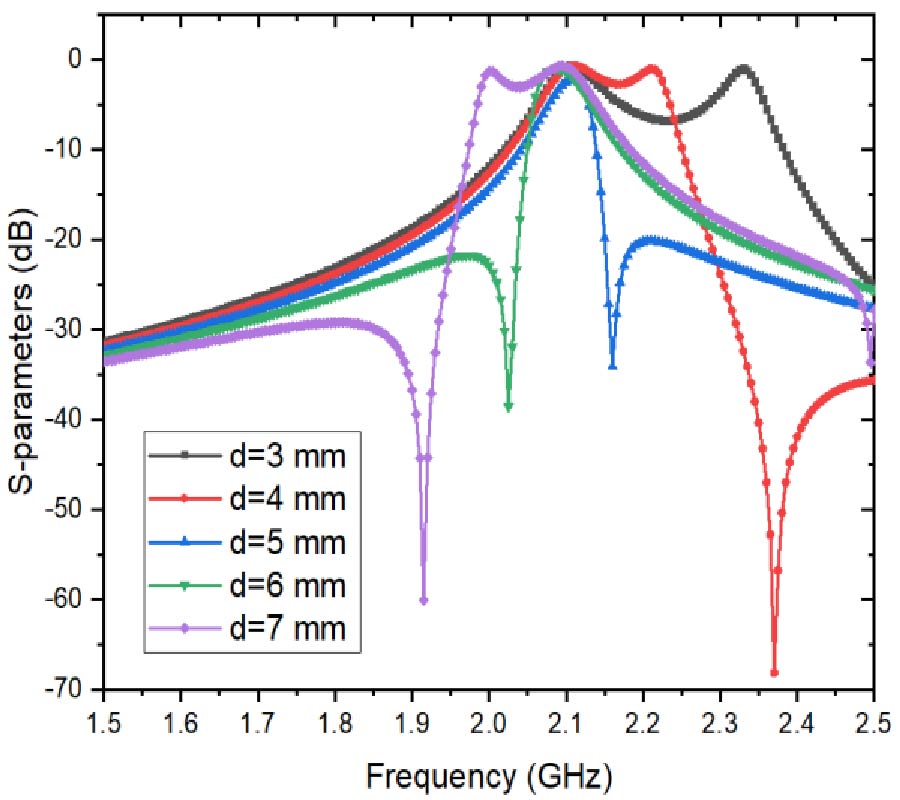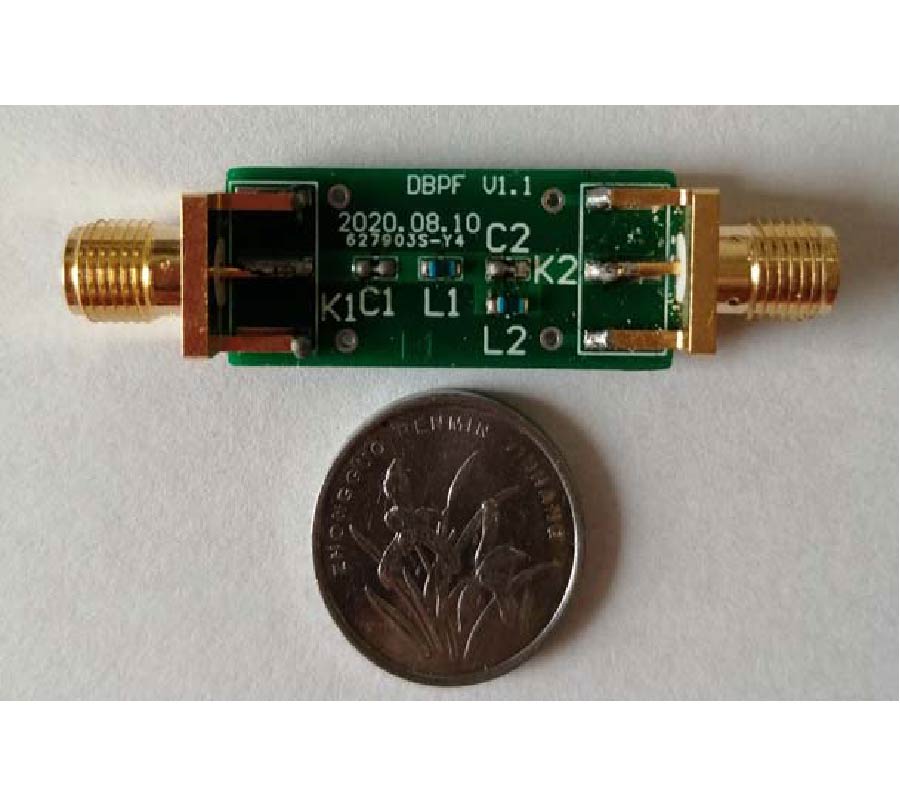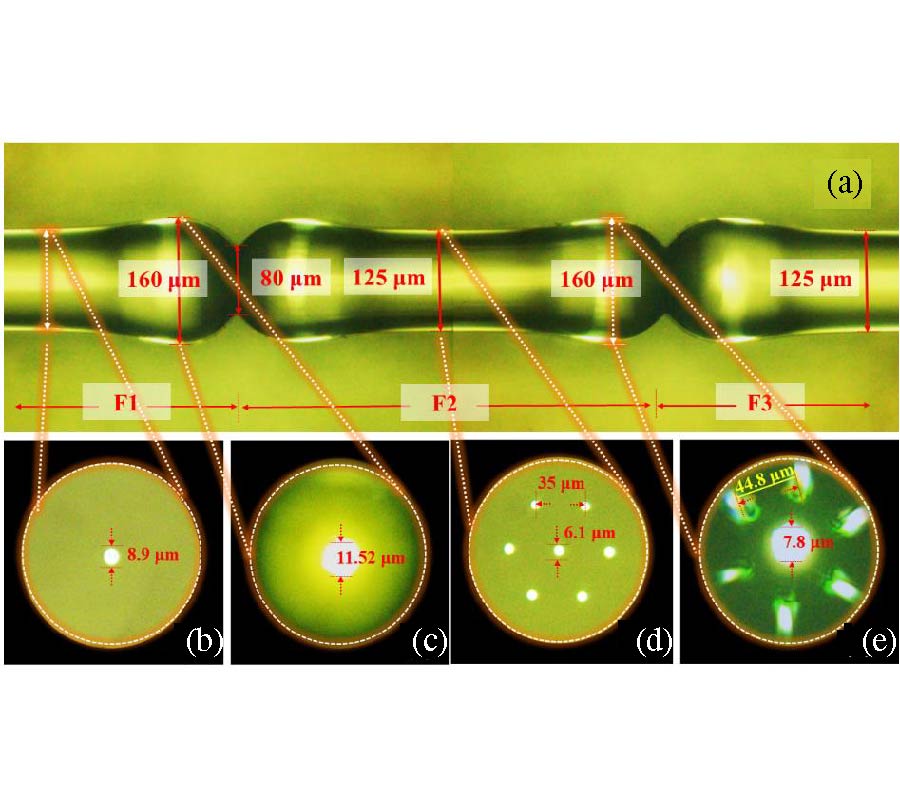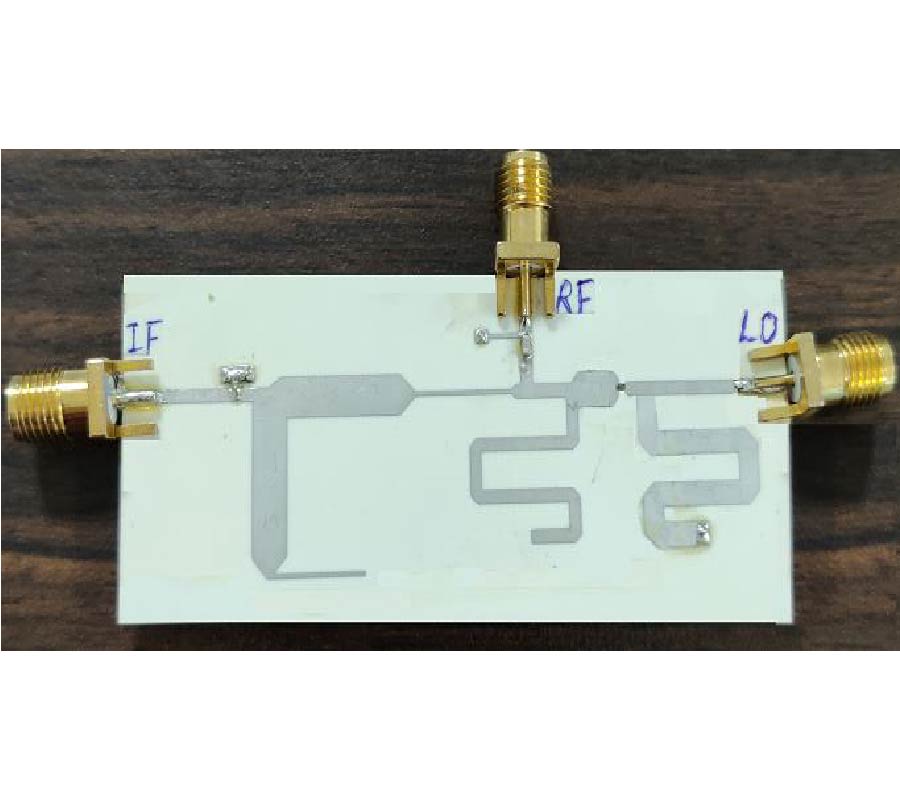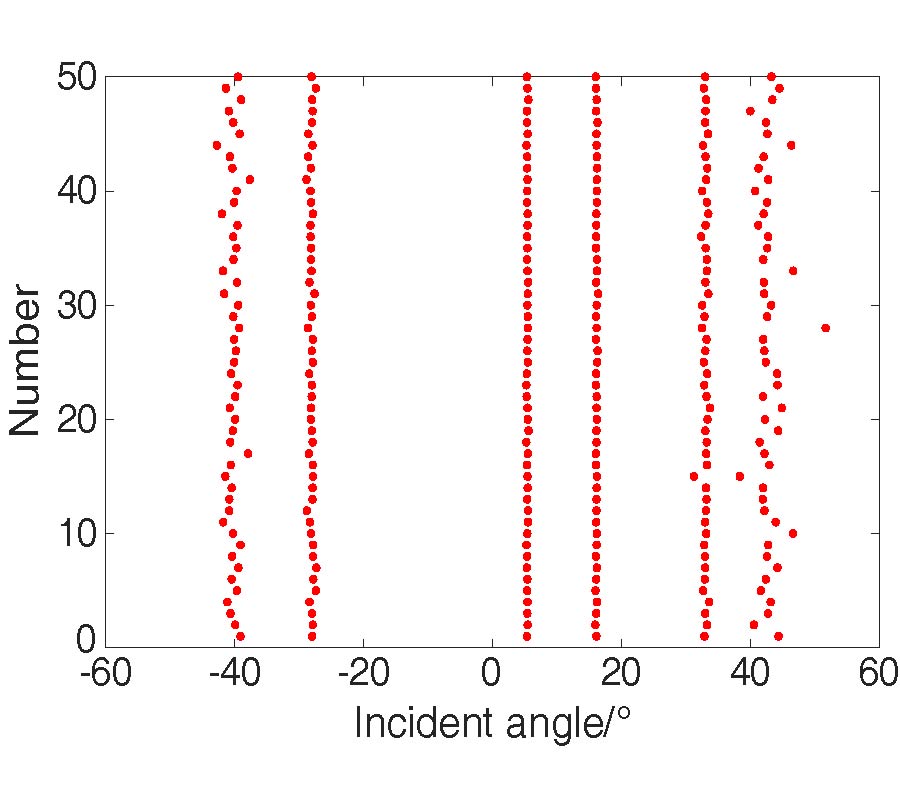2021-05-18 Latest Published
By Dokuparthi Jagadeesh
Alapati Sudhakar
Progress In Electromagnetics Research C, Vol. 112, 251-261, 2021
Abstract
In this paper, a triangle-shaped Quarter Mode Substrate Integrated Waveguide (QMSIW) cavity back slot antenna is developed using TE110, TE220, and TE310, 130 modes for tri-band operation. The QMSIW is obtained from the quadrant part of a square SIW (Substrate Integrated Waveguide) structure. The electric field distributions of resonant modes are studied for the Full Mode SIW, Half Mode SIW, and Quarter Mode SIW cavities through HFSS simulation tool. The generation of the hybrid mode TE310, 130 mode is clearly explained with the simulation tool. A rectangular slot is engraved on top layer of the structure along the perfect electric wall, to radiate the EM (Electro Magnetic) wave towards positive Z-direction. Further, a metallized via has been inserted to bring reflection coefficient below -10 dB at the three resonant modes. The developed antenna achieves resonance at 5.2 GHz, 9.88 GHz, and 10.6 GHz frequencies with peak gains of 9 dB, 6.2 dB, and 7.9 dB, respectively. The antenna is designed on a single layer thin substrate which reduces the fabrication complexity.
